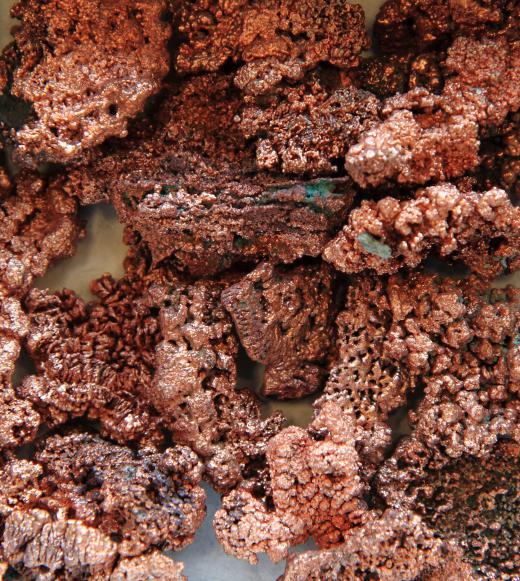Discovered in 1778 by Swedish Chemist Carl Wilhelm Scheele and isolated in 1781 by Peter Jacob Hjelm, molybdenum is used mainly as a component of alloyed steel. A silvery white metal with an atomic number of 42, it is solid at room temperature, has an atomic mass of 95.94, and appears in the periodic table of elements under the chemical symbol of "Mo." Because of its softness, color, and greasy feel, it was originally mistaken as a lead compound. Its name, derived from molybdos, the Greek word for lead, reflects this.
One of molybdenum's most unique and therefore useful qualities is its extremely high melting point: 4753°F (2623°C or 2896 K). In fact, compared to other pure elements, it has one of the highest melting points. Because of its ability to withstand extremely high temperatures, molybdenum is used in the manufacture of missiles, aircraft, spacecraf, rifle barrels, light bulb filaments, and furnace components.

In the United States, about two-thirds of the molybdenum is used to make stainless and alloy steel. Stainless steel, resistant to rust and corrosion, is used, for example, in water distribution systems and food-service equipment. Durable alloy steels are used in the formation of automotive parts and construction machinery. Added to steel alloys, molybdenum forms an extremely strong product that can withstand high temperatures. It can also be used as a smoke and flame retardant, a corrosion inhibitor, a dry lubricant, and a chemical catalyst in certain applications in the petroleum industry.

The United States is a significant source of the world's molybdenum, drawing from mines in Colorado, New Mexico, and Idaho. Other prolific producers worldwide include China, Canada, Peru, and Russia. The metal can be mined directly, gleaned from ore sources such as molybdenite or molybdenum sulfide (MoS2), obtained as a by-product of copper mining, and recovered from the mineral wulfenite (PbMoO4).

Molybdenum is also important biologically as it facilitates the process of nitrogen absorption in plants. In order for soil to support plant life, it must contain a satisfactory level of this mineral. Trace dietary amounts are also necessary to promote growth in animals; excessive amounts, however, are toxic. As a result, in the US, exposure in the workplace is regulated by both the Occupational Safety and Health Administration (OSHA) and the National Institute for Occupational Safety and Health (NIOSH).
